My 13 Art and Math Projects for Kids post has been doing pretty well on my site lately, so I decided to keep the art integration going with Science! Check out these awesome ways to teach science using art below.
There are tons of projects out there online that integrate art and science, but the science is mixing a sensory goop. Those are so fun, but I left them out for this collection. I only choose science and art activities that teach specific science concepts as this post is about teaching science using art rather than teaching art using science.
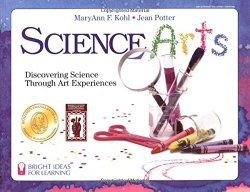 Before reading on, check out this book by MaryAnn Kohl, Science Arts: Discovering Science Through Art Experiences. I love her books and have several of them (but not this one! I need to remedy that.) If you like the science and art activities below, I’m sure this book won’t disappoint! Please note, this post includes Amazon affiliate links. As an Amazon Associate I earn from qualifying purchases.
Before reading on, check out this book by MaryAnn Kohl, Science Arts: Discovering Science Through Art Experiences. I love her books and have several of them (but not this one! I need to remedy that.) If you like the science and art activities below, I’m sure this book won’t disappoint! Please note, this post includes Amazon affiliate links. As an Amazon Associate I earn from qualifying purchases.
Rainbow Paper | Color Science for Kids by The Science Kiddo
 This is so cool! I almost stopped writing this post to go try this with my kids. Basically, you use clear nail polish, water, and paper to capture rainbows on paper. So neat! You could use this as a great little activity to help explain to children how rainbows exist.
This is so cool! I almost stopped writing this post to go try this with my kids. Basically, you use clear nail polish, water, and paper to capture rainbows on paper. So neat! You could use this as a great little activity to help explain to children how rainbows exist.
The Art & Science of Leaf Rubbings by Edventures with Kids
Texture rubbing is a staple in the art classroom, and I like how Jacquie incorporated the science of trees with her kids. I know I will definitely be using this activity in my homeschool!
Leaf Relief by Cassie Stephens
While we are talking about leaves, check out this project. It is pretty freaking amazing. It does require a little heavier involvement with the teacher, but the results are so beautiful! This definitely takes leaf printing to the next level.
Exploring Absorption with Watercolors on a Texture Board by Fun at Home with Kids
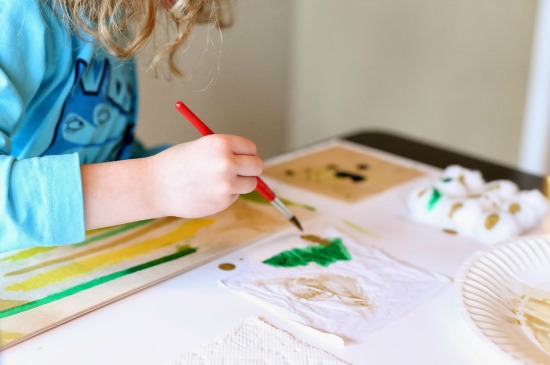 I love this project exploring the different absorptive qualities of different materials. This is a great way for the child to experiment and describe their observations!
I love this project exploring the different absorptive qualities of different materials. This is a great way for the child to experiment and describe their observations!
Art & Science for Kids: Watercolors & Oil by Babble Dabble Do
 Teach your kids that oil and water don’t mix with this fun project with a gorgeous end result!
Teach your kids that oil and water don’t mix with this fun project with a gorgeous end result!
Sweet Science – The Study Of Seed Crystals Growth (Rock Candy) by Fancy Shanty
 I love posts that make me want to drop everything and do the activity. This is one of those! I love this. Stacey and her boys made crystals/rock candy. It looks like a lot of fun. She added some cool color experiments at the end which give it an art twist.
I love posts that make me want to drop everything and do the activity. This is one of those! I love this. Stacey and her boys made crystals/rock candy. It looks like a lot of fun. She added some cool color experiments at the end which give it an art twist.
Explore Nebulae Through Art by Mosswood Connections
 This is a fun little miniature project where the kids make nebulae out of glue and liquid watercolor. They also provide some links to learn more about nebulae at the bottom of the post.
This is a fun little miniature project where the kids make nebulae out of glue and liquid watercolor. They also provide some links to learn more about nebulae at the bottom of the post.
Exploring Sunography: Making Sun Prints by In the Playroom
 Yesss! I love sun prints. So fun. So learning about stuff. That’s really all I have to say about that. Just make some. It’s neat.
Yesss! I love sun prints. So fun. So learning about stuff. That’s really all I have to say about that. Just make some. It’s neat.
Flower Petal Fingerpaint by The Chaos and the Clutter
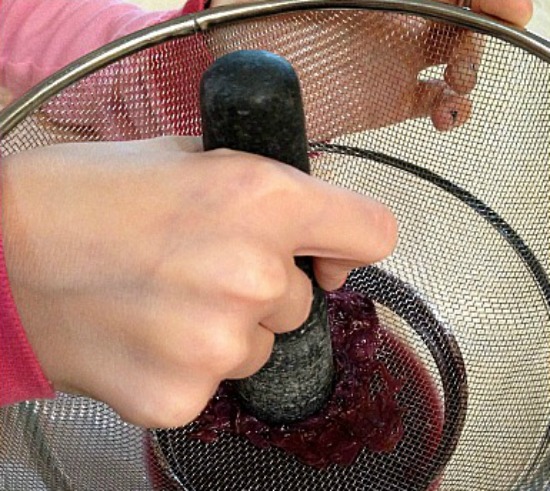 Love. This. So. Much. This is a science, art, history extravaganza, and it’s fabulous. Sharla and her kids took flowers and made paint from them. I would probably use this more in an art history lesson rather than science perhaps studying textiles from South America or something like that, but however you teach it, it is such a great activity.
Love. This. So. Much. This is a science, art, history extravaganza, and it’s fabulous. Sharla and her kids took flowers and made paint from them. I would probably use this more in an art history lesson rather than science perhaps studying textiles from South America or something like that, but however you teach it, it is such a great activity.
Exploring Sound: Making a Kazoo by Buggy and Buddy
 Make a musical instrument and learn about the science of sound. I love how the blogger included discussion questions and scripted out some things to say when you do the activity with your kids. Helpful!
Make a musical instrument and learn about the science of sound. I love how the blogger included discussion questions and scripted out some things to say when you do the activity with your kids. Helpful!
Connecting Art and Science with Hokusai’s The Great Wave by Pragmatic Mom

This is one of my favorite artworks. I’ve always loved it! In this post, Mia at Pragmatic Mom shares some great books and resources about the artwork and also describes how to use this artwork to teach about the science of Tsunamis. I’ve written about this artwork and others like it on my post of Japanese ukiyo-e prints as well as my Japanese prints Montessori-inspired lesson for kids.
Jupiter Art and Science Lesson by Adventures in Mommydom
 In this project, students make a watercolor painting of Jupiter. I love how Ticia at Adventures in Mommydom teaches the science as the project goes on–the gas storms, why Jupiter has a red spot, Jupiter’s moons, etc. She also has a cool science project idea for Jupiter in a later post as well.
In this project, students make a watercolor painting of Jupiter. I love how Ticia at Adventures in Mommydom teaches the science as the project goes on–the gas storms, why Jupiter has a red spot, Jupiter’s moons, etc. She also has a cool science project idea for Jupiter in a later post as well.

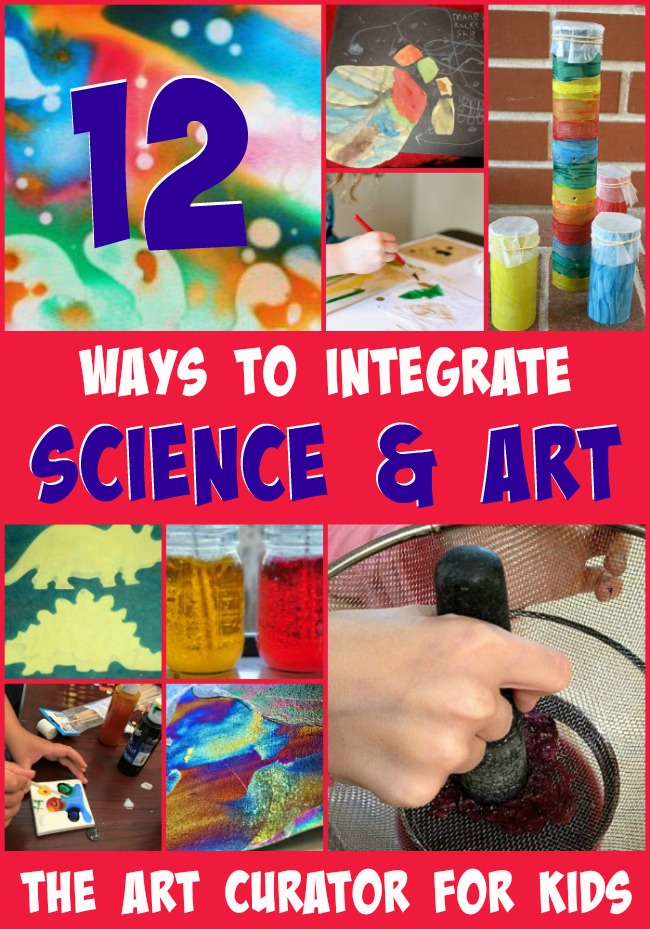
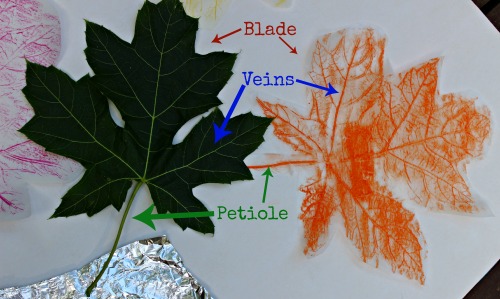


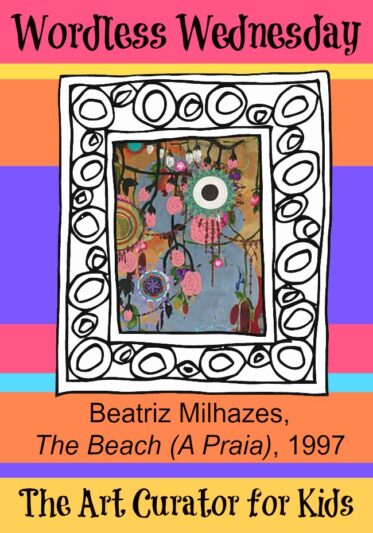


Thanks so much for including my post on The Great Wave by Hokusai!!
Of course! And, thank you for linking to mine and for all the tweets! 🙂
Hi,
I tried getting your freebie worksheets for sometime now and it won’t send me the email for them. lalimboyoguen@sulross.edu. I want to introduce this concept to my college class.
Thank you for letting me know. I just attempted to email you and it bounced back, so the reason you have not received your requested downloads is that your schools firewall is blocking our emails. Do you have a different email you can send the downloads to?
If I suscribe, will >I have access to the recorded webinars ??
Many thanks for your help
María
Yes! If you join The Resource Library, you will have access to both the live and recorded webinars.
I suggest taking down the nail polish project:
Only one other person back in 2015 brought up the concern about the toxicity of nail polish. As an artist and executive director of an arts education organization, I have given lectures on toxins in art materials. Nail polish is NOT JUST problematic if children eat it – it’s the fumes that are so extremely toxic . The chemicals used in nail polish are neurotoxins – dibutyl phthalate, toluene, and formaldehyde and are called the ”toxic trio.”
Children have something like 32x the metabolism rate as adults. Nail polish is toxic to us, therefore, children absorb it 32 times faster than we do. Never do this project with children at home or in the classroom! Use other methods to teach ROYGBIV projects such as bubbles, prisms or DVDs.
There is organic nail polish without such chemicals now….but it is pricier. Agree that nail polish in general is not a classroom-friendly material.
nice
We can also learn
Thanks for all the lovely ideas you are generating . Loving it all.
this is so interesting I ve a lot how science meet art , we cannot separate the two
Agreed!
Thank you for providing art lessons connected to science ideas!
You’re welcome!